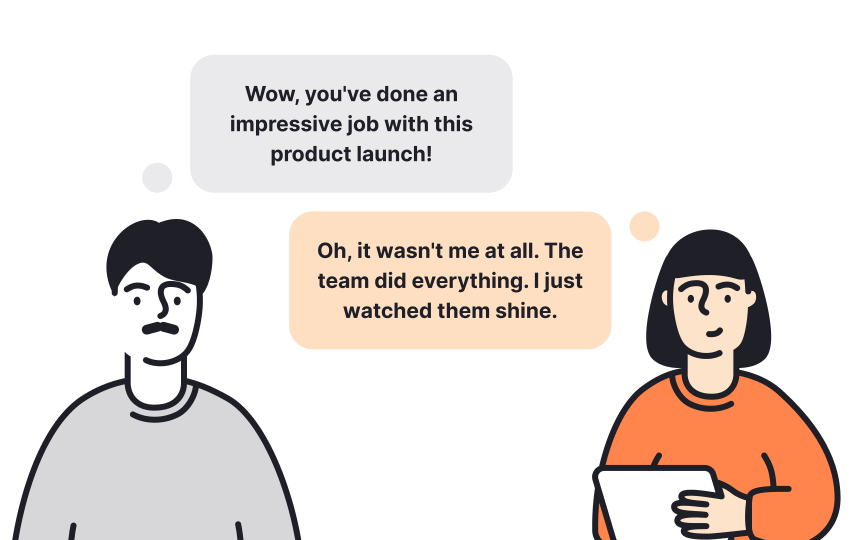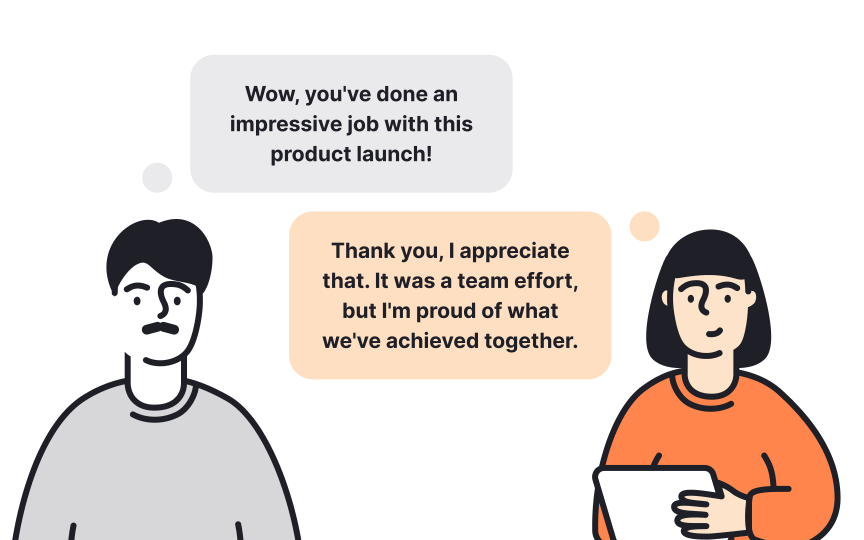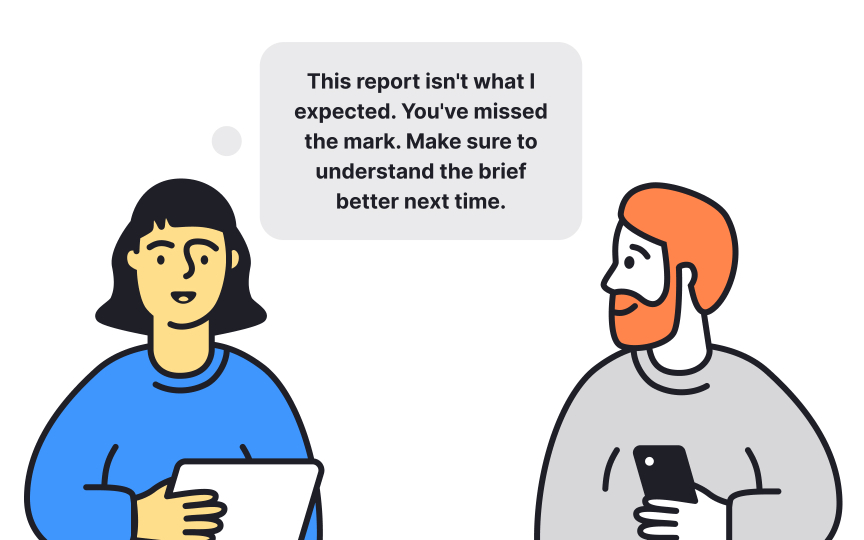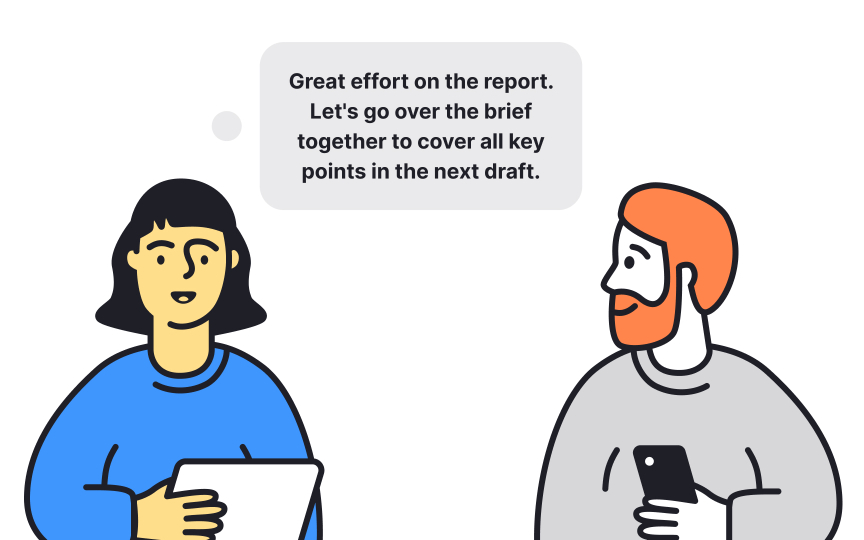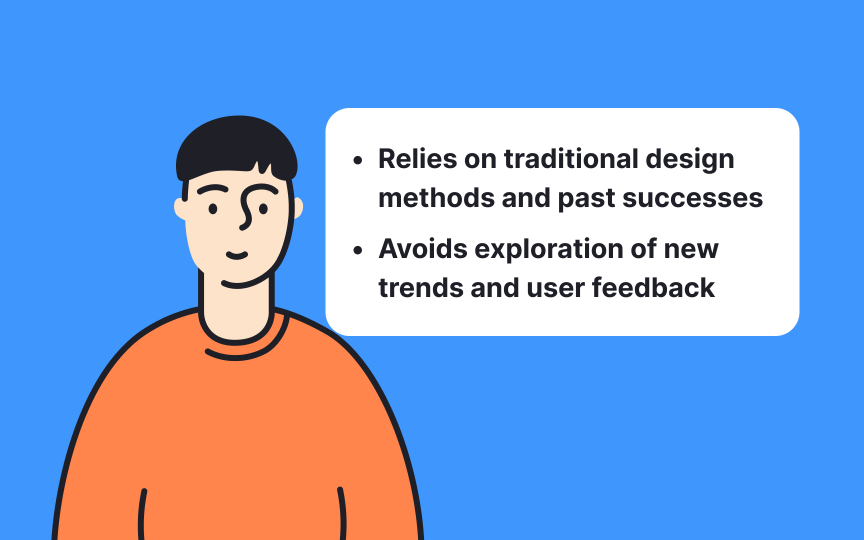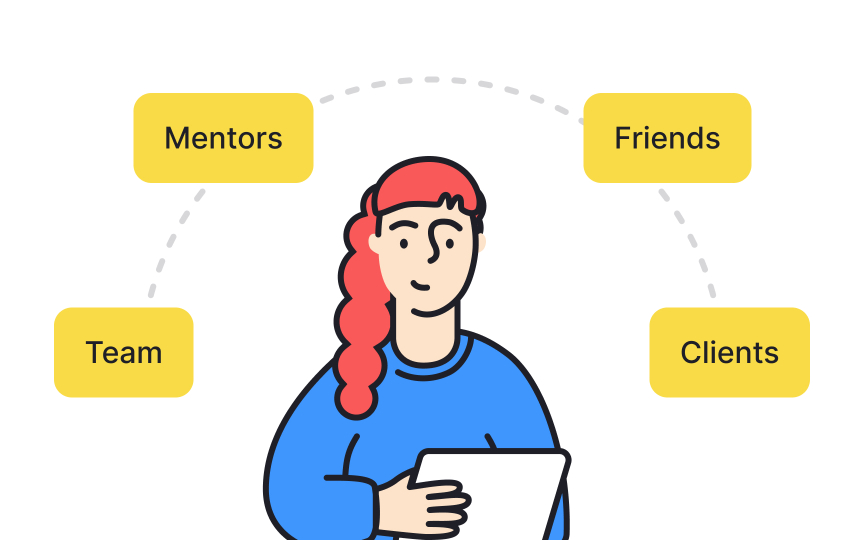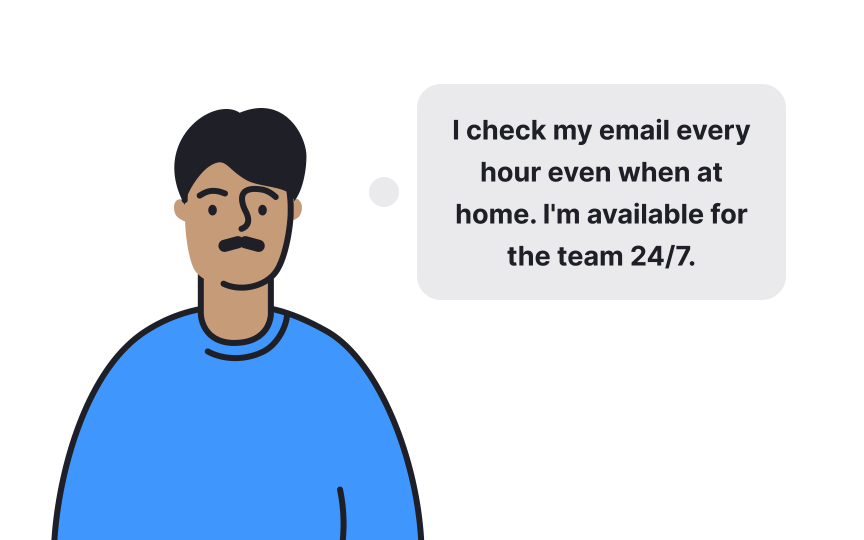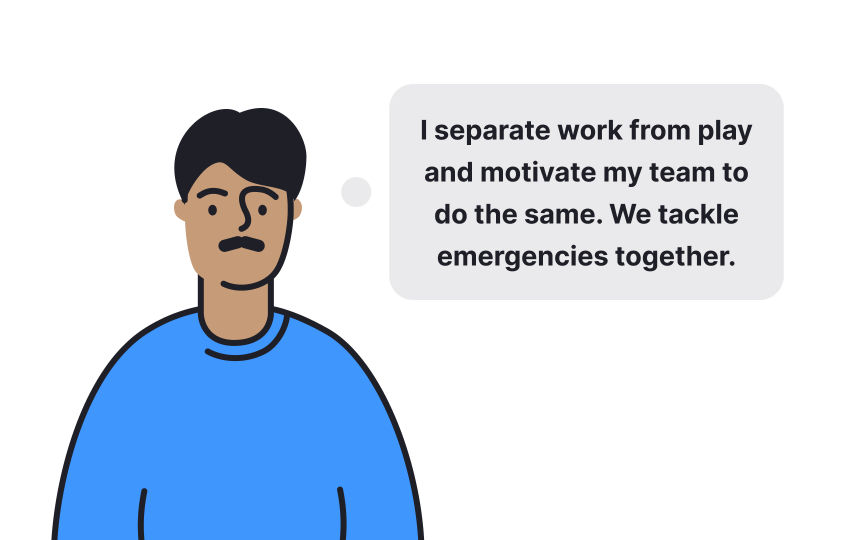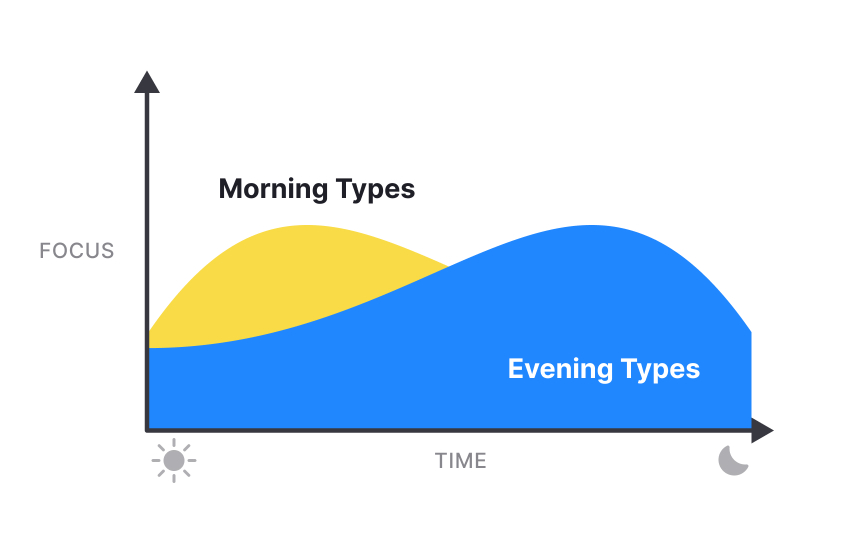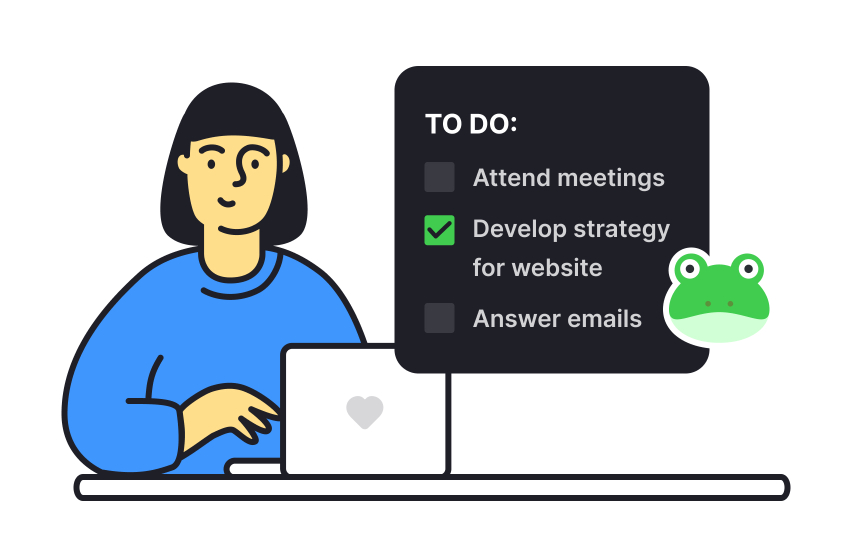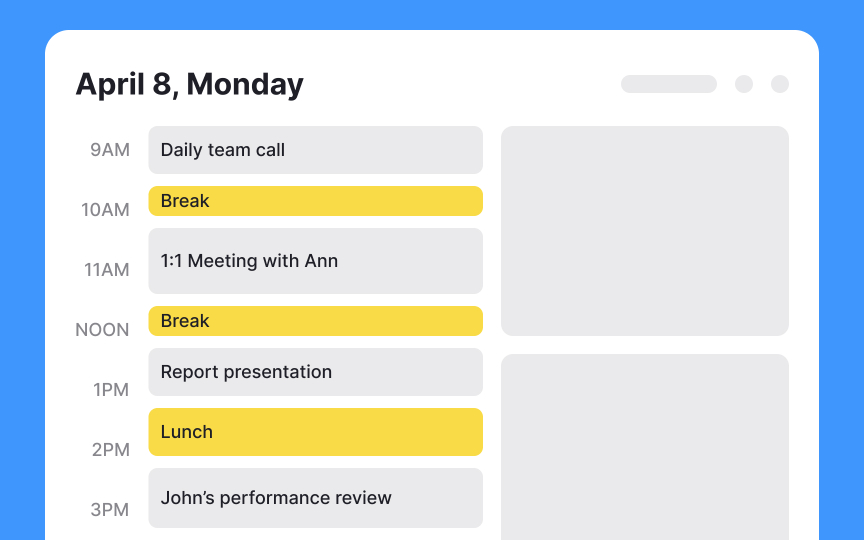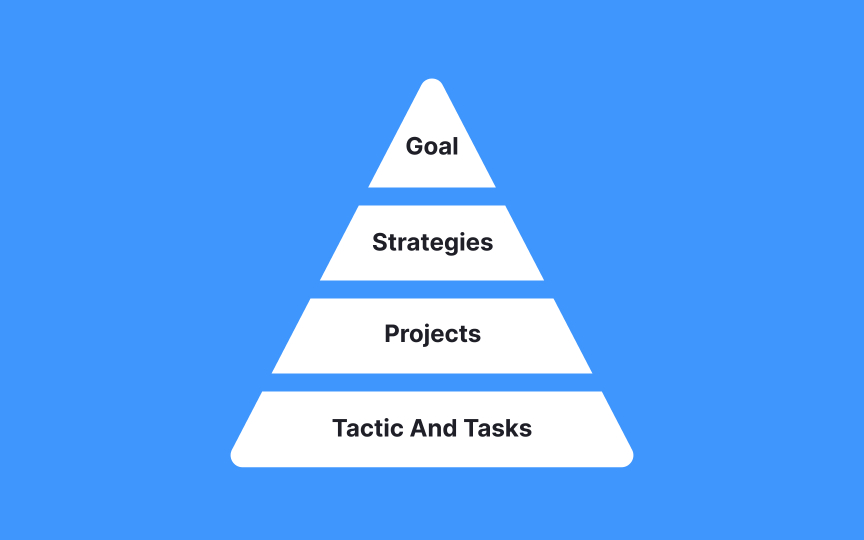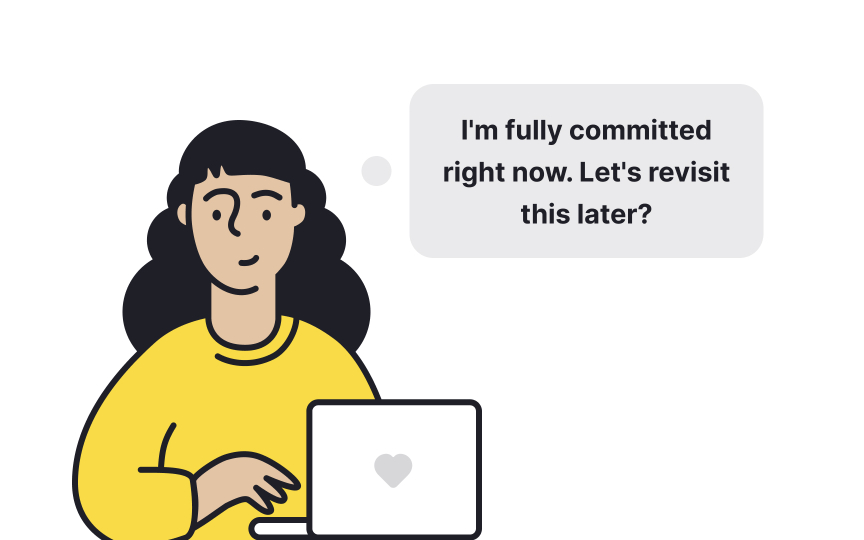Personal Growth & Time Management
Learn simple ways to manage your time and personal growth as a design leader
The ability to efficiently manage time while also focusing on personal growth is what distinguishes exceptional leaders from the rest. In this lesson, we'll explore practical strategies to help you manage your time effectively while nurturing your personal development journey.
You’ll discover simple yet powerful techniques to optimize your daily schedule, prioritize tasks, and overcome common time management pitfalls. You'll also learn how to maximize productivity without sacrificing quality or creativity. Most importantly, we'll delve into strategies for continuous learning, self-reflection, and skill enhancement, empowering you to thrive in an ever-evolving industry. By the end of this lesson, you’ll be equipped with practical tips to enhance both your professional and personal growth.
Recognizing your own accomplishments isn't about sidelining your team — it's about showcasing the collective success, with a nod to your guiding hand. Show others how to take pride in their work by doing so yourself. Your confidence can inspire your team and also make you a truly decisive and self-aware leader.[1]
Here are some simple steps to acknowledge your achievements:
- When receiving praise, accept it graciously. Mention your team’s role but ensure your efforts are highlighted too.
- Share successes in meetings, framing them as team achievements while subtly pointing out your leadership role.
- When talking about achievements, remember "we" includes you. It's a collective success where your guidance was instrumental.
- Keep a record of milestones and your part in reaching them. This can be useful for reviews, mentoring, and motivating your team.
Effective leadership thrives on strong communication skills, ensuring everyone is aligned and moving forward together. Here's how to be a good communicator:
- Clarify complex ideas: Translate complex concepts into actionable steps. For instance, instead of a vague "We need a user-friendly interface," specify, "Let's simplify the navigation to 5 essential sections.”
- Active listening: Demonstrate genuine interest in team members' contributions through engaging responses, showing their insights are valued in decision-making.
- Constructive feedback: Provide specific, actionable advice to foster growth. Replace generic urges to "improve" with targeted suggestions, like "Incorporate user feedback into the design to enhance usability.”
- Promote open dialogue: Cultivate a safe space for all to voice ideas and concerns, ensuring no one feels judged.
- Adapt communication: Adjust your approach to fit each team member's preferences — some may prefer succinct feedback, while others might value detailed guidance and positive acknowledgment.
Exploring and leveraging the latest design trend lets you keep up and set the pace, ensuring your team and products stand out from the crowd. Here’s how to do it:
- Stay curious: Regularly check out design blogs, podcasts, and webinars, attend workshops and courses, and read up on the latest design literature.
- Network: Connect with fellow designers and creatives. Sometimes, the next big trend is sparked in casual conversation.
- Experiment: Don’t be afraid to try new ideas in your projects. Some might not work, but one breakthrough can lead to a sea of opportunities.
- Listen to your audience: User feedback tells you if you’re heading in the right direction with your designs.
- Leverage social media: Platforms like Instagram or Pinterest are hotbeds for the latest visual trends. Use them to inspire your work and stay relevant.
- Monitor competitors: Keeping an eye on what others are doing can help you identify trends they're missing, giving you a competitive edge.
Taking time for self-reflection periodically makes your work clearer and your ideas sharper. Whether daily, weekly, monthly, or quarterly, these pauses help you stay true to your goals, grow, and lead better. In these moments, ask yourself about your creativity, leadership style, team engagement, and personal growth.
Here are some questions to help you get started:
- Which areas of my technical expertise need strengthening, and what's my plan for that?
- How have I inspired my team this week/month?
- What did I do to foster a creative and supportive environment for my team?
- Have I listened actively to my team's ideas and concerns?
- In what ways have I helped my team grow and tackle new challenges?
- What have I learned from a recent setback, and how have I shared this learning with my team?
- How am I contributing to my team's sense of purpose and motivation?
For design leaders, the impact of your closest circle — your team, design peers, clients, and mentors — can't be overstated. They're key to easing the stresses of leadership and ensuring you grow both professionally and personally. Here’s how to build this support network:
- Choose team members wisely: Look for individuals who not only have the skills but also share your vision, values, and enthusiasm.
- Seek feedback from design peers: Regularly sharing your experiences and seeking advice from your design peers is a great way to broaden your perspective and find innovative solutions.
- Cultivate relationships with clients: When possible, select clients who align with your values and goals. If choice isn't an option, prioritize open and honest communication to ensure mutual understanding.
- Seek out mentors: Regardless of your leadership level, identify leaders you admire and reach out for advice and perspective to guide your own journey.[2]
Pro Tip: Explaining the nature of your job to your family can help you get their emotional support and encouragement.
Research shows leaders who mentally disconnect from work in the evenings, allowing themselves time to recharge, tend to perform better. This is especially true for those new to leading roles. Overworking and always being on call drains your mental energy, making it harder to lead effectively.[3]
How can you find this balance?
- Start by establishing clear mental boundaries between your work and home life — stop thinking of work once you leave the workplace.
- Set communication norms with your team, like defining your availability hours and deciding what counts as an emergency after hours.
- Outside of work, dive into activities that help you unwind and relax. It could be picking up a new hobby, exercising, enjoying time with loved ones, or just reading a book.
As a leader, you're juggling a diverse set of tasks every day, and the best way to tackle them effectively is by understanding your chronotype. A chronotype is essentially your body’s natural clock that dictates when you’re most alert and energetic throughout the day. It's why some of us are morning people, buzzing with energy at dawn, while others find their stride in the afternoon or evening.
To find your chronotype, pay attention to when you naturally wake up feeling refreshed and when you hit your energy highs and lows. This insight allows you to align your tasks with your energy levels. For instance, if you're a morning person, schedule your most demanding or important tasks for the early part of the day. If your energy peaks later, save those big tasks for the afternoon or evening.[4]
"Eat the frog" might sound funny, but it’s a super helpful tip for tackling tasks, both daily and long-term. Imagine your "frog" as the hardest task on your to-do list, something you're maybe not looking forward to. The idea is to do this task first thing in the morning or at the start of the project, when your energy and focus are at their peak. Why? Because once it's done, you’ll feel a huge sense of achievement, and everything else will seem easier in comparison.
However, this approach might not fit everyone's style, especially if your energy peaks at different times — this is where knowing your chronotype comes in handy. If "eating the frog" doesn't suit your rhythm, aligning tasks with your natural energy levels might be more effective.
To manage your time effectively and avoid feeling overwhelmed, consider choosing from these techniques:
- Time blocking: This involves allocating specific time blocks to various tasks or activities throughout your day. It means you focus on one task at a time, reducing the likelihood of multitasking that could potentially decrease your attention and productivity.
- The Pomodoro Technique: Work for 25 minutes, then take a 5-minute break. After 4 pomodoros, take a longer 15-30 minute break.
- The Eisenhower Matrix: Categorize your tasks by urgency and importance into four quadrants: Do, Decide, Delegate, and Delete. This helps you focus on what matters and avoid wasting time on unimportant tasks.
More importantly, identify what commonly interrupts your work, such as phone notifications or unnecessary meetings, and take steps to minimize these distractions during critical work periods.
As a design leader, it's your job to keep an eye on the big picture. But remember, even the longest journeys are made up of smaller steps. To make sure you don't run out of steam before reaching your goal, pace yourself and set smaller, intermediate goals along the way. Think of these as checkpoints you need to pass to reach the final goal.
Here’s how to do it:
- Break down goals: Slice your big goals into smaller, manageable tasks.
- Celebrate small wins: Each time you reach an intermediate goal, take a moment to celebrate. This keeps morale high and motivation strong.
- Adjust as needed: Be ready to adjust your plans based on what you learn along the way.
Learning to say "no" is a crucial skill, not just for managing projects but also for maintaining your personal boundaries and well-being. It applies to requests from team members, superiors, and clients alike.
Here’s when saying no is important:
- To protect your time: If a request clashes with your priorities or personal time, it’s okay to decline.
- For your well-being: When you’re at capacity and taking on more would mean sacrificing your health or work quality.
- To stay true to your values: If a request doesn’t align with your ethical standards or long-term goals.
Saying no politely involves clear communication and respect in a way that shows you’ve considered the request seriously but are mindful of your limits. Remember, saying no isn’t a sign of refusal to help — it’s about ensuring you can help effectively when it counts.
Making use of technology and tools for
- Time management and planning: For keeping your schedule tight and tasks in order, tools like Google Calendar and Microsoft Outlook are staples for planning. Trello, Linear, Jira, and Asana are ideal for breaking down projects into actionable tasks with deadlines.
- Time tracking tools: To gain insights into how you spend your workday and optimize your productivity, Toggl and Harvest are excellent choices.
- Journalling and personal growth: Journaling apps like Day One and Reflectly offer prompts and insights to encourage self-reflection, making it easier to track progress and set goals.
- Virtual assistant tools: For automating tasks and managing your digital workload, tools like Zapier and IFTTT act as your virtual assistants, connecting different apps and automating workflows.
References
- 3 Ways Humility Can Undermine Your Leadership | Harvard Business Review
- Want to Be a Better Leader? Stop Thinking About Work After Hours. | Harvard Business Review
